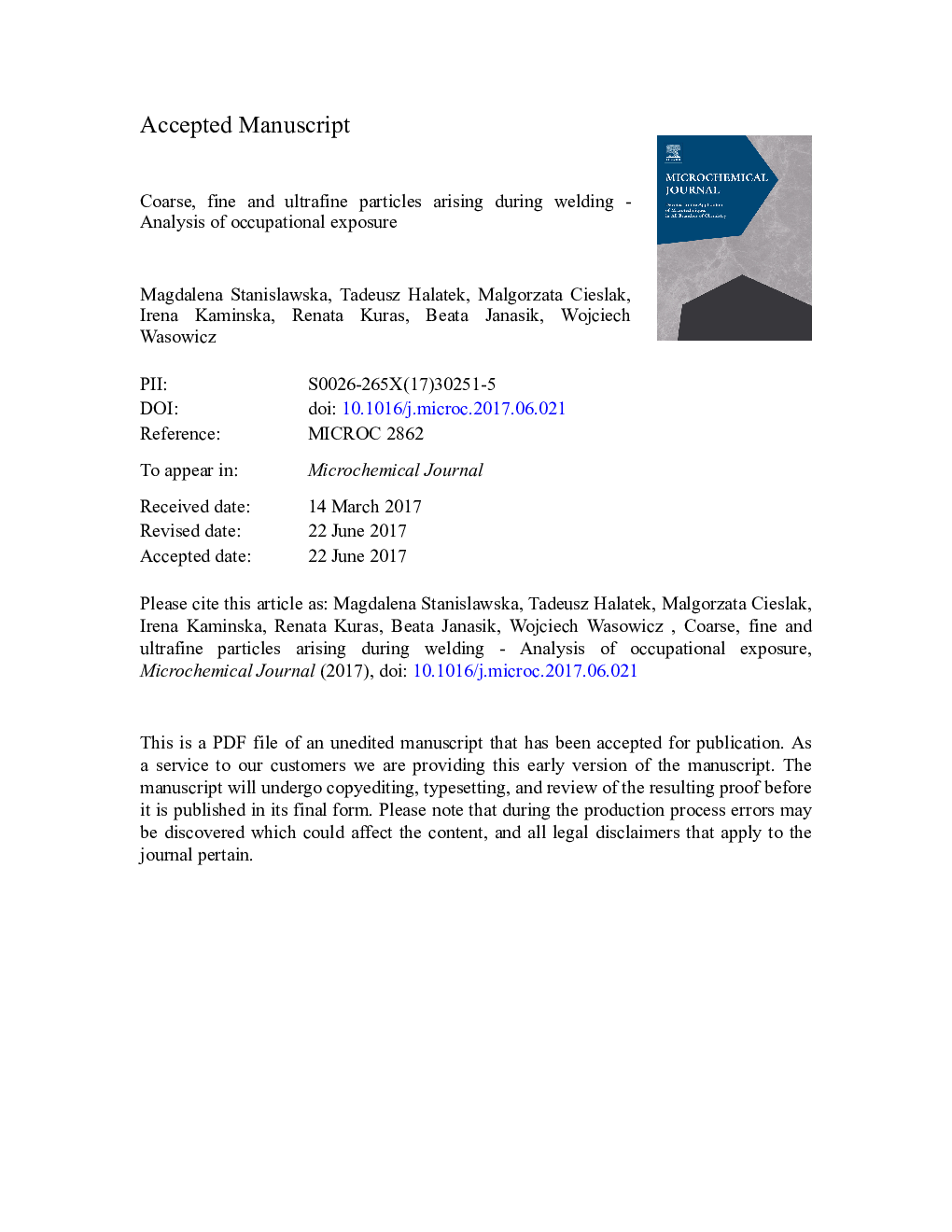| Article ID | Journal | Published Year | Pages | File Type |
|---|---|---|---|---|
| 5139211 | Microchemical Journal | 2017 | 36 Pages |
Abstract
Analysis of occupational exposure to welding fumes is based on determination of inhalable and respirable fractions of dust and its chemical components. Such measurement does not reflect the actual exposure because it does not include significant parameters related to particle sizes, especially the ultrafine. The study was aimed at investigating exposure to welding fumes containing metals and fine and ultrafine particles. The studies were carried out at two metal industry plants during stainless steel and mild steel welding. Stationary samples of welding fumes were collected for evaluation of morphology and structure of fluids, using scanning electron microscope (SEM) and energy dispersive spectrometry (EDS). Individual samples were collected from welders inhalable breathing zones to determine the concentration of iron (Fe), manganese (Mn), nickel (Ni), chromium (Cr+Â 6 and Cr+Â 3) and their compounds in inhalable and respirable fractions, using flame absorption atomic spectrometry (FAAS) and inductively coupled plasma mass spectrometry (ICP-MS) techniques. The results indicate that stainless steel welders were capable of producing fumes containing carcinogenic and neurotoxic metals with concentrations exceeding Limit Values (LV).
Related Topics
Physical Sciences and Engineering
Chemistry
Analytical Chemistry
Authors
Magdalena Stanislawska, Tadeusz Halatek, Malgorzata Cieslak, Irena Kaminska, Renata Kuras, Beata Janasik, Wojciech Wasowicz,
